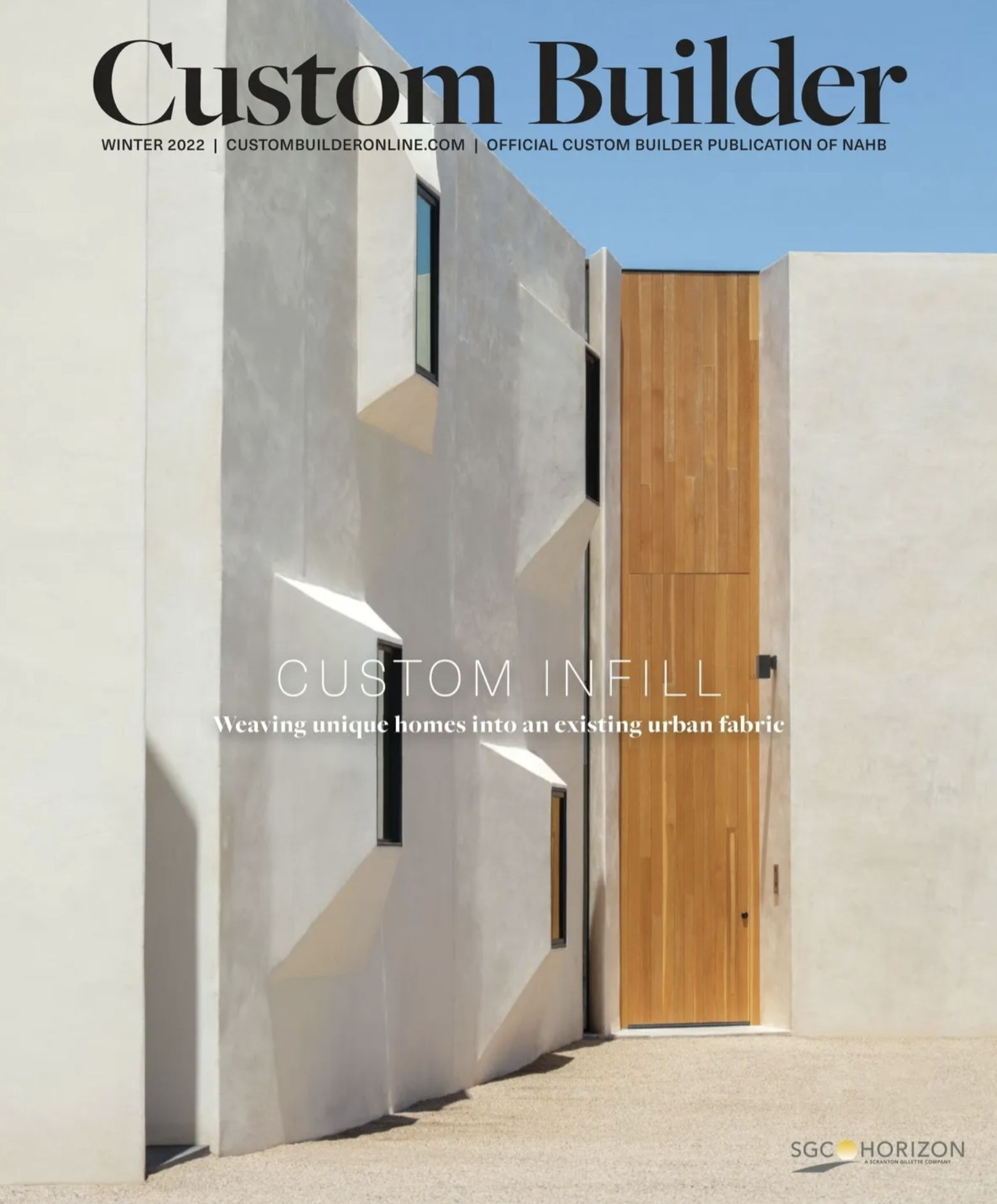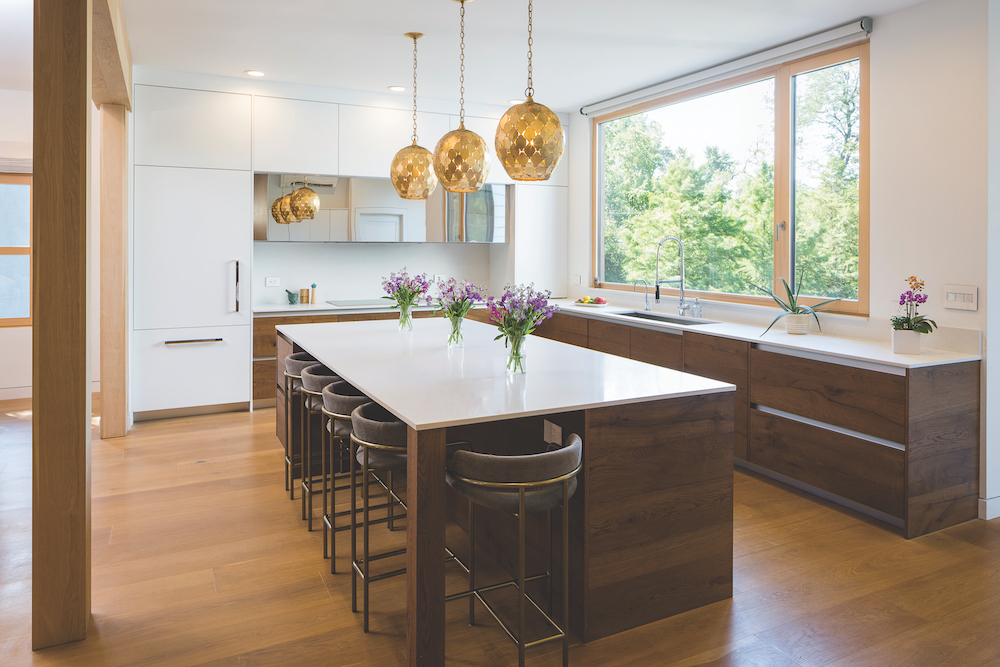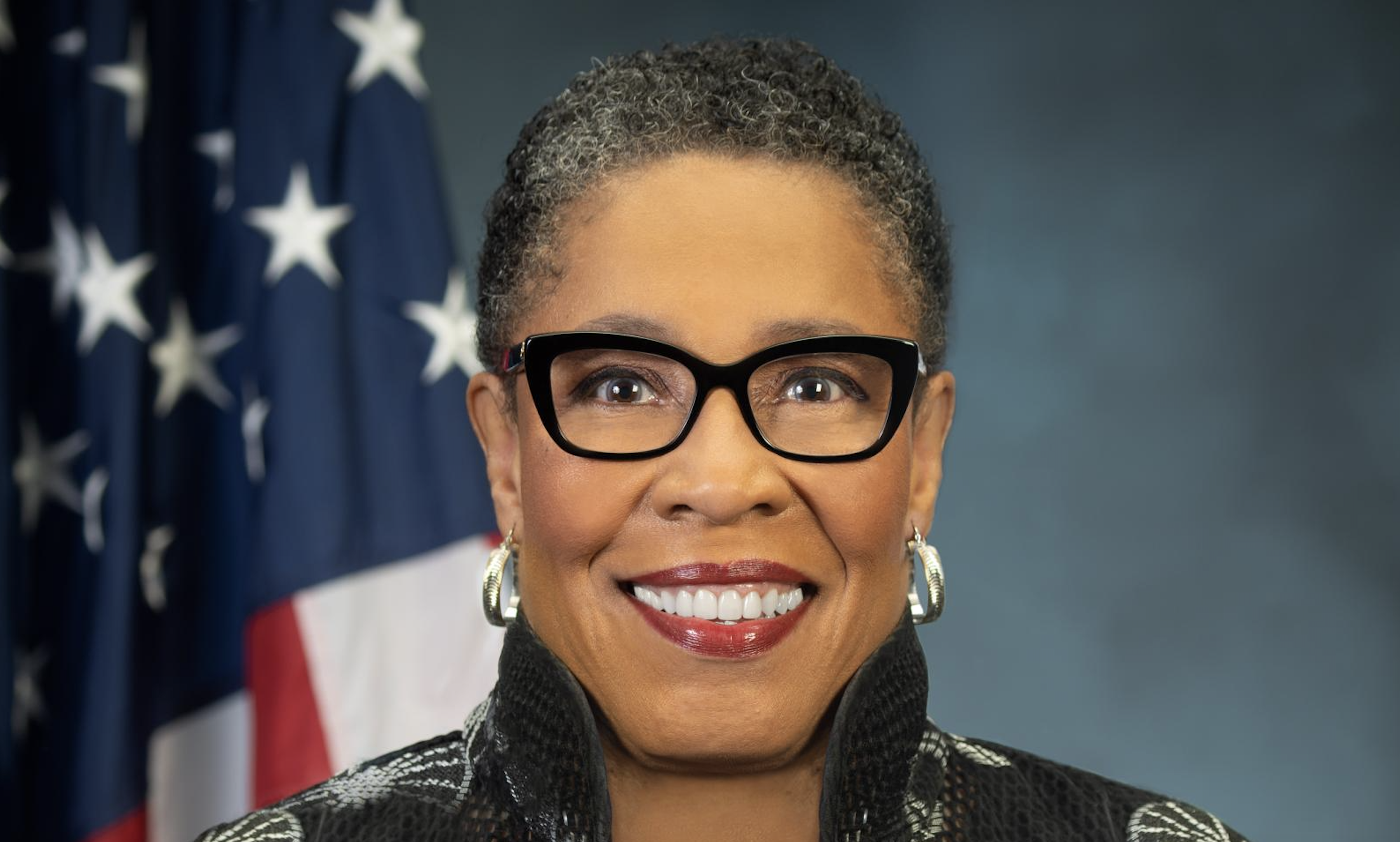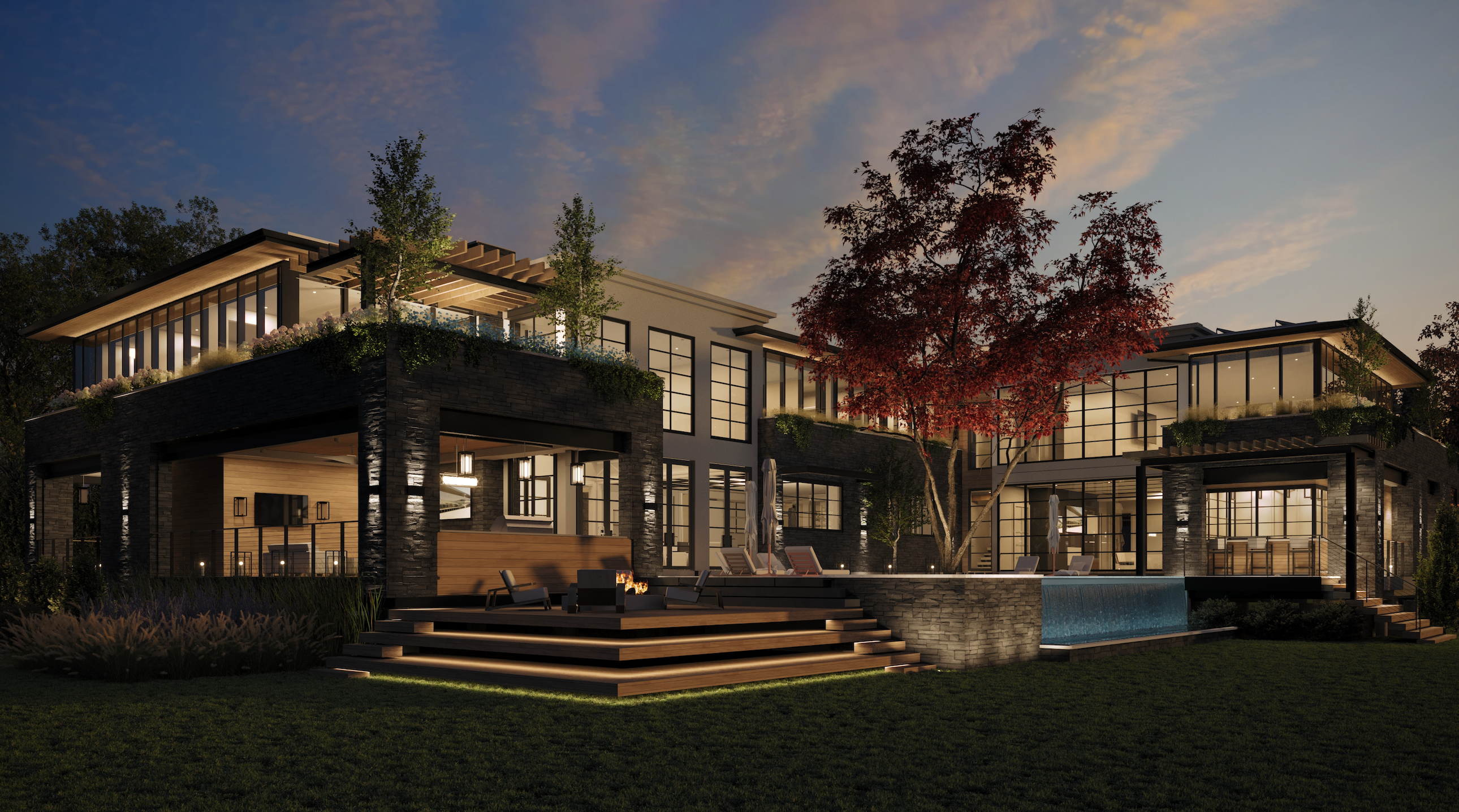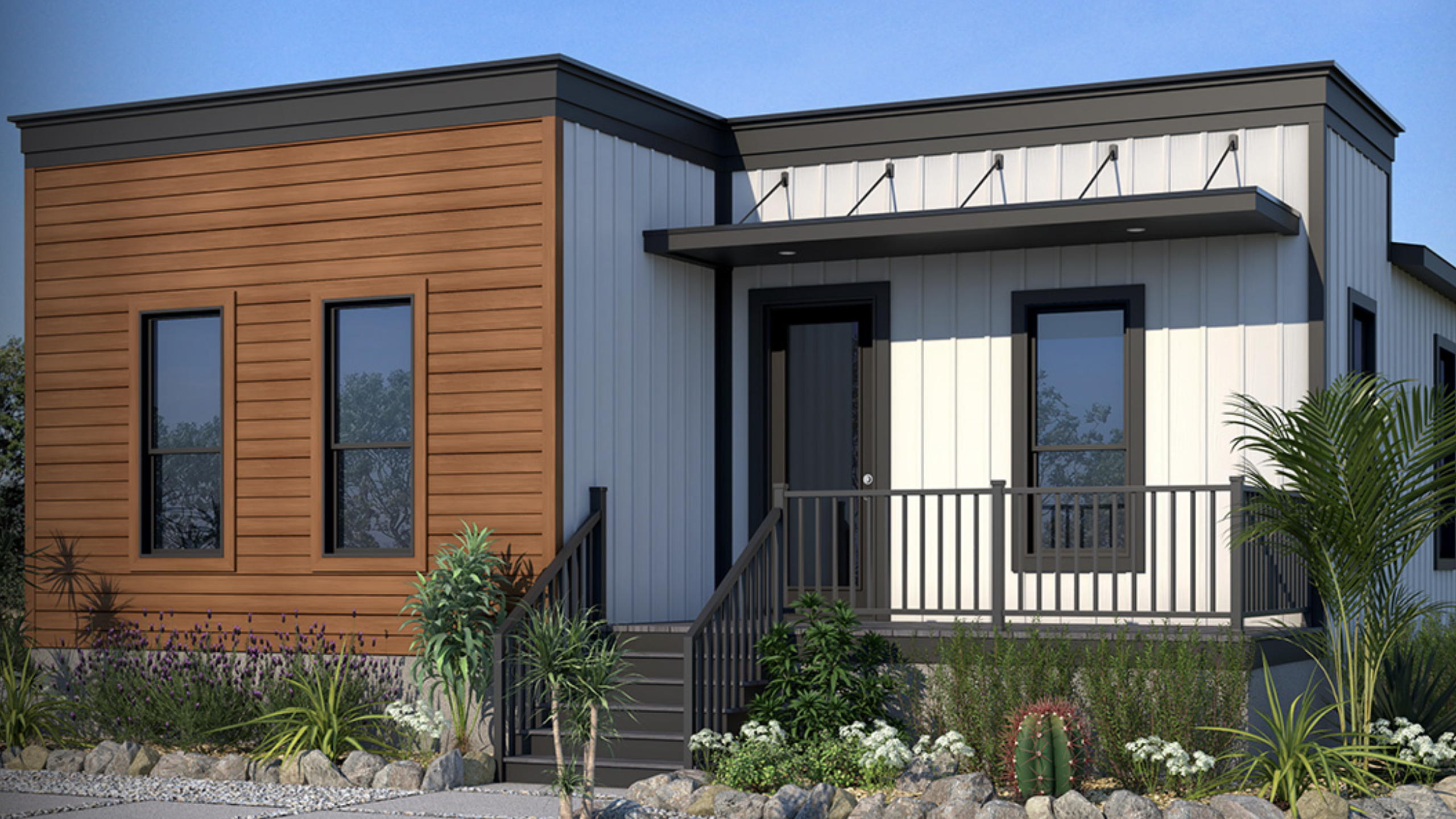Rather than analytics about reach, engagement, shares, or likes, it was a half-dozen client comments on social media following a week of record-breaking subzero temperatures that confirmed BrightLeaf Homes’ messaging about home performance was getting through to consumers. A half dozen customer testimonials celebrating the comfort of their homes, even in frigid conditions, validated the Hinsdale, Ill., custom building and remodeling firm’s mission.
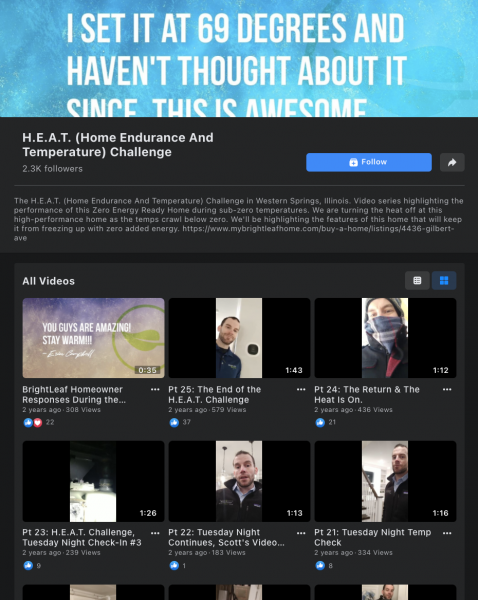 Maria M., of La Grange Park, Ill., wrote, “It is so nice to be in an air sealed [BrightLeaf] house. We used to open cabinets and get a blast of cold air. You really notice [the comfort] when sitting by the windows. We get to enjoy those spaces so much more.”
Maria M., of La Grange Park, Ill., wrote, “It is so nice to be in an air sealed [BrightLeaf] house. We used to open cabinets and get a blast of cold air. You really notice [the comfort] when sitting by the windows. We get to enjoy those spaces so much more.”
Kate Kirby posted, “At 9 a.m., with minus 20 temperature outside, inside my BrightLeaf home it is 73 degrees and the heat actually has switched off. I’m very happy today!”
“We are having no issues staying warm, and our windows are not icy at all! Love our BrightLeaf home!” said clients Abe and Carol.
“I set [the thermostat] at 69 degrees and haven’t thought about it since. [T]his is awesome,” read a post from Estevan C.
Linda M. chimed in, “Tony turned the heat up to 72 and I told him, ‘I’m hot, turn it down.’”
Those comments followed BrightLeaf Homes’ HEAT (Heat Endurance And Temperature) Challenge during a week in January 2019 when a polar vortex dropped Chicago area temperatures to -30° F. The HEAT Challenge was a spur-of-the-moment idea by Scott Sanders, BrightLeaf’s president and CEO, as he was going to a recently completed, unoccupied spec house to shovel snow from the walkways. He’d been strategizing how to boost his company’s activity on social media, and the weather forecast called for arctic temperatures in the coming days. So, he thought, why not see how long the room temperature inside a home built to the U.S. Department of Energy’s Zero Energy Ready Homes standards could stay above 49° F after turning off the heat?
RELATED
- Social Skills for the Custom Builder
- A Craftsman’s Use of Social Media Puts Him on the Map
- A Picture is Worth a Post
That kernel of an idea turned into a 25-part video series on Facebook and Instagram that not only documented hourly and daily thermostat and temperature checks, but also gave Sanders the opportunity to conduct a house tour and briefly explain the building science features keeping the home warm, such as a vapor barrier and insulation under the concrete basement floor, dense-pack cellulose insulation in the wall assembly, and air sealing the home. Viewers could also win an Apple watch by guessing the date and time the heat would have to be turned back on (36 hours was the winning answer).
The post that featured a temperature check 23 hours after shutting off the heat (56° F on the main floor) garnered more than 1,200 views—BrightLeaf’s highest engagement at the time.
“The engagement and the feedback was good, but it could be better,” Sanders says. “I bet if we did that same thing now, during a terrible cold spell or a heat wave, we would be able to do much more.”
BrightLeaf’s challenge is to educate buyers that its standard package—all of the materials, products, and construction practices that achieve Zero Energy Ready and the Environmental Protection Agency’s Indoor airPLUS and Energy Star certifications—makes for a better, healthier living experience. But that’s a lot of building science, which can not only be confusing, but also sound expensive. The team eventually realized it had to stop posting on social media about low-carbon design, testing HVAC, and showing off what’s behind the walls. “We realized we don’t sell a lot of homes to tree huggers,” Sanders says. “Most are sold to people who are sort of interested in sustainability, but they’re really interested in performance ... in air quality and in not having a drafty home.”
Homebuyers’ first reflex is not wanting to pay more for features that, for them, aren’t top of mind, such as triple-pane windows, exterior sheathing with rainscreen, air sealing in the attic, and so on. But they’re also not willing to opt out of the benefits those “invisible” elements provide, such as a tight house that’s free of drafts, that has the correct detailing so there’s no water intrusion to encourage mold growth, and air that’s free of unhealthy particulates.
So BrightLeaf Homes pivoted its messaging to answer the burning question many homeowners have: What’s in it for me?
“There have been studies on retirement investing about companies that automatically enroll their employees [in retirement plans], so they start investing with their first paycheck, and to change that, the employee has to request to turn off the contributions. Those companies have greater participation—by a huge amount,” Sanders says. “I think it’s the same when we market. If we put those [features] in our standard package, people accept it. More people are willing to learn about it, and they’re OK with it because they understand the benefits. They’re not willing to downgrade to something that would cost less because they know they are sacrificing something by using poor insulation, or inferior windows, doors, and materials that aren’t so great for their health over the long term.”
"Homebuyers’ first reflex is not wanting to pay more for features that, for them, aren’t top of mind, such as triple-pane windows, exterior sheathing with rainscreen, air sealing in the attic, and so on. But they’re also not willing to opt out of the benefits those “invisible” elements provide..."
BrightLeaf’s social media posts don’t go too deep too fast. When buyers want more details, they can click on a link that takes them to a blog, a video, or a web page that provides those answers. Consequently, the BrightLeaf team finds it doesn’t need to explain or sell how a feature, building material, or particular construction practice will deliver high-performance benefits. So, instead of the sales talk getting bogged down in window R-values or the home’s air changes per hour, the discussion progresses further down the funnel to selections for countertops, cabinets, and other interior details.
BrightLeaf, though, is still figuring out social media. Despite all of the available analytics and search engine optimization data, the team still often has trouble putting a finger on which specific message or post prompted a customer to pick up the phone and call. Was it one of the many posts about construction quality, the blog about 15 questions to ask before hiring an architect, or tips about designing an energy-efficient home? The analytics aren’t particularly clear, and even when salespeople ask for specifics about how the buyer found BrightLeaf, prospects usually don’t recall or say they saw the company’s signage at a jobsite.
But clearly, something is working. BrightLeaf was building about one house per year when it started in 2013. The builder has since branded itself as a resource for helping clients find, assess, and buy land to build on, buy and sell real estate, coordinate financing, and provide architectural and interior design services—all in-house. And by midsummer this year, the company had 39 new-construction and remodeling projects under construction or in the pipeline.
“So [it appears] somebody likes the branding and the values we have as a company,” Sanders says. “They’re certainly buying into it, and it’s easy to buy into when it’s digestible and when [high-performance elements] aren’t just an option. We’re not optioning cellulose insulation or saying you could have better windows or you could pay more attention to air-sealing details. It’s, do you want a house where you can sit next to the window and feel totally comfortable? And to that, everyone says, yes.”
Related Stories
Custom Builder
HUD Secretary Marcia Fudge Announces Forthcoming Resignation
U.S. Department of Housing and Urban Development Secretary Marcia Fudge has said that she intends to leave office later this month
Custom Builder
Floodproof on a Floodplain
An impressive addition to the IDEA Home series, the NEWLOOK Experience Home is a master class in engineering and creative design, with builder Michael Freiburger out-thinking an exceptionally tricky lot
Custom Builder
Why Start a Custom Building Business?
In this Taking Care of Business segment, expert coach and trainer Scott Beebe joins our host Duane Johns to talk about where custom builders could be getting off on the wrong foot
Custom Builder
3 Questions Answered About Reliable Energy in Home Construction
Energy expert Bryan Cordill makes a case for why and how propane is an answer to growing concerns about reliability and resilience in home construction
Business
Custom Builder to Talk Color Design with Becki Owens at IBS
At this year's IBS, renowned designer Becki Owens will sit down with host James McClister, editor of Custom Builder, to discuss a variety of topics from basic color play in design to the Allura Spectrum palette, a collection of Sherwin-Williams colors curated for the benefit of pros
Business
PERC Highlights Sustainability and Efficiency at IBS with 'Clean Build Conversations'
Hear from industry standouts Matt Blashaw and Anthony Carrino at this hour-long Show Village event
Business
5 Foundational Cornerstones of a Successful Custom Building Business
Business coach Scott Beebe shares insights into the often ignored business basics that could be the difference between long-term success and failure
Custom Builder
Start With the Why: Fundamentals of the Custom Builder Business
In our inaugural episode of Taking Care of Business, host and custom builder Duane Johns sits down with Scott Beebe, head coach and founder of My Business on Purpose, to talk vision, purpose, mission, values, and more
Business
Why AI Is Now Key to Our Trade Partner Strategy
Thompson Custom Homes Business Manager Erin Day explains how AI became a crucial part of building and maintaining successful trade partner relationships
Business
Thriving in 2024: Tips for Succeeding in an Uncertain Environment
Author and sales expert Mark Richardson shares his insights on the industry and how to rethink your approach to success in the new year
